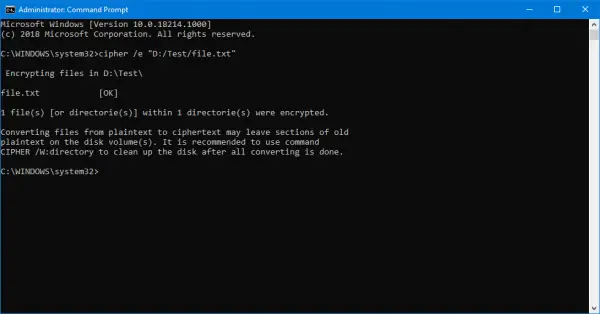
Now we will try and read the contents of the file using the cat command. Let’s say a file.txt file in the encrypted folder. mount | grep ecryptfsĭive further into verification by creating a file. You can verify this by issuing the command. With these steps correctly done, your directory will be encrypted and mounted. Mounted eCryptfs Step 3: Verify the Encryption Successfully appended new sig to user sig cache file In order to avoid this warning in the future (yes/no)? : yes Would you like to proceed with the mount (yes/no)? : yes It looks like you have never mounted with this keyīefore. You will enter the below information to encrypt your directory Passphrase: enter your passphraseġ) aes: blocksize = 16 min keysize = 16 max keysize = 32Ģ) blowfish: blocksize = 8 min keysize = 16 max keysize = 56ģ) des3_ede: blocksize = 8 min keysize = 24 max keysize = 24Ĥ) twofish: blocksize = 16 min keysize = 16 max keysize = 32ĥ) cast6: blocksize = 16 min keysize = 16 max keysize = 32Ħ) cast5: blocksize = 8 min keysize = 5 max keysize = 16Įnable plaintext passthrough (y/n) : nĪttempting to mount with the following options:

The command here will be: sudo mount -t ecryptfs demo/ demo/ Let’s take a practical example using the directory /demo on my system. You are required to replace the Destination directory with your own directory. the general syntax to encrypt a directory with eCryptfs is: mount -t ecryptfs -o With eCryptfs installed on your Linux system, we are set to encrypt directories.

Sudo zypper -install ecryptfs-utils Step 2: Encrypt Directories With eCryptfs On Linux
#THE COMMAND TO ENCRYPT XFILE IS INSTALL#
Sudo yum install epel-release sudo yum install ecryptfs-utils Step 1: Install eCryptFS on LinuxĮCryptFS is available in many Linux distros’ default repositories and can be installed with the below commands: #Install eCryptFS on CentOS 8/REL 8/Rocky Linux 8/AlmaLinux With this information, we are set to dive into the installation and use of eCryptFS.

It was originally authored by Michael Halcrow and the IBM Linux Technology Center and is currently maintained by Dustin Kirkland and Tyler Hicks from Canonical.


 0 kommentar(er)
0 kommentar(er)
